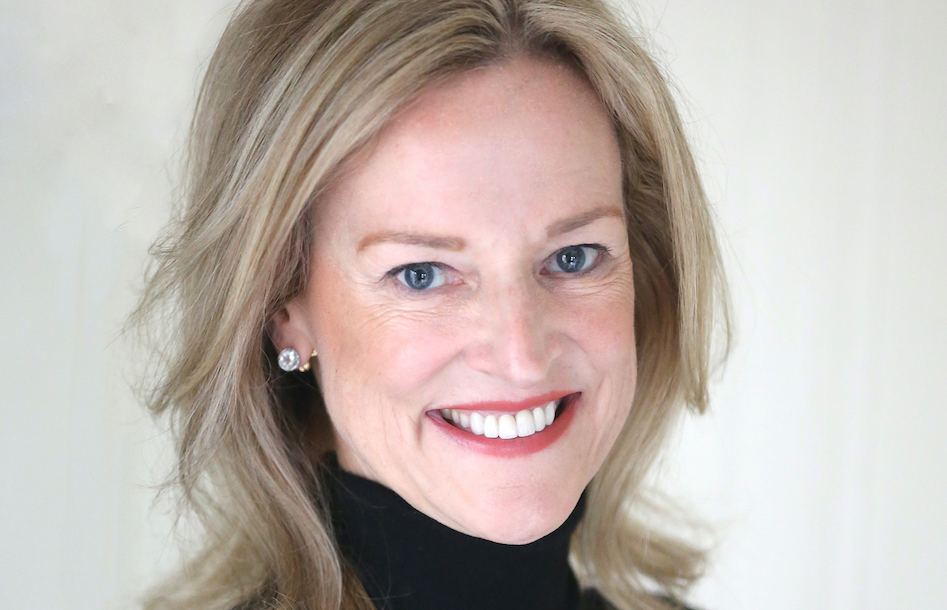Honeywell Communications Chief Stacey Jones on adaptability, collaboration and proactive learning
Jones drops comms gems collected throughout her career.

The most well-rounded communications leaders got that way by staying open, trying new things and always internalizing what they learned along the way.
Stacey Jones, Communications Chief at Honeywell, understands this better than most. For over three decades, Jones has sharpened her communications leadership skills acoss multiple industries, business functions and vastly distinct stakeholder sets.
Along the way, she’s also collected communications wisdom that’s proven universally applicable.
Lessons in adaptability from local news
While many comms leaders started as journalists, Jones’ first job out of school as a local news reporter for Suburban Publications was a serendipitous opportunity that gave her skills she’d apply throughout her career.
Specifically, being a local news reporter taught her:
- On-the-job learning: Jones emphasized the importance of practical experience as a reminder that you don’t need to know everything from the start. In fact, being able to stay iterative and grow along the way is a constant for comms leaders.
- On-the-spot assessment: The skill of rapid assessment became critical in Jones’ reporting: “The news judgment that it taught me,” she said, “[is that] getting a crisp, quick pitch out in 30 seconds is invaluable.”
- Audience segmentation: Reporting on real people from different backgrounds taught Jones to understand the nuances of different audiences.
“It really does teach you audience segmentation on steroids, because you’re doing it every day,” she said. “Every time I communicated, I had to consider how each audience would perceive the information.”
- Getting approval from internal stakeholders: Jones learned what was landing by observing how internal processes worked, recalling that “I could focus on the things that weren’t going to get killed by the copy desk.”
Lessons in crisis management from healthcare comms
After working as a reporter and editor for a few years, Jones became a Senior Account Executive at Burson before transitioning to a media relations manager role at Andersen Consulting, where she worked in the global healthcare sector. She then went on to become regional PR manager at wellness company Aetna.
This period of her career focused on removing friction to bring conflicting groups closer together. That required developing crisis management skills.
“Being able to navigate these discussions was both scary and instructional,” said Jones. She learned:
- Understanding stakeholder emotions: Central to Jones’ crisis management training was recognizing the importance of addressing emotional concerns: “Lives were at stake… these were not transactional issues,” she said. “You had to manage the emotions of those affected.”
- The primacy of trust: Jones learned firsthand how rapid response and transparency are non-negotiable. “Especially when you’re dealing with healthcare, you need to build trust quickly,” she explained, “as people’s lives often depend on the decisions made.”
- Conflict resolution: Comms are the conveners of distinct stakeholder groups, and they don’t always agree on a mitigation strategy. “Every day was about negotiating with different groups and finding a way to bring them closer to a resolution,” Jones said.
Lessons in changing minds
Jones also thinks of her time at Aetna as a crash course in consumer engagement and understanding benefits.
“We used to say that people knew as much about their health plan as programming their VCR,” she joked. This highlighted a critical communication gap.
Closing the gap involved:
- Consumer education: Jones understood her priority was educating consumers: “One of my missions as a communicator was ensuring that you knew you had options,” she said.
- Communicating for accessibility: Jones quickly learned that closing the gap meant making sure Aetna’s health benefits seemed accessible to clients and customers. “There was so much information that just slipped between people’s fingers,” she said. “The healthcare system is complicated, and we must simplify it for people.”
- Changing mindsets: Closing this gap also prompted Jones to seek to change how people viewed their health plans, she explained, adding that “we wanted them to see their health plans as something that could truly benefit their lives.” This focus on behavioral change stuck with her across future comms and marketing roles alike.
Lessons in proactive learning at Accenture
Transitioning to Accenture and staying there for over two decades gave Jones an opportunity to showcase her ambition, adapt to different roles and serve different markets.
She began as a senior media relations manager before rising through the ranks to become a managing director, then transitioning to corporate marketing lead when the opportunity arose. She became a managing director of corporate communications and, eventually, the company’s first corporate comms lead.
“I worked across a lot of different industries,” she explained. “The opportunity to step up and raise your hand to contribute was amazing.”
Jones believes these advancement opportunities were possible because of:
- The magic of mentors: Jones credited her mentors at Accenture with shaping her career, saying that they helped her simplify complex industries and technologies. “Paying it forward and the ability to grow people really stuck with me.”
- A culture of growth: Jones also learned that a true culture of growth had a ripple effect. “I felt my sponsors invested in understanding my interests and strengths and considering me for opportunities as they came along,” she said. “It really is contagious within a team.”
- Winning combination: communications skills + proactive learning: That growth manifests when people on your team are proactive about their learning and development. “If you have strong comms skills and abilities, you can learn an industry and be successful across multiple content areas and businesses, but having a passion for learning is what makes a difference,” said Jones.
“Don’t be afraid to raise your hand for projects outside your immediate role. Every experience, whether positive or negative, offers a lesson. Be open to those lessons.”
Lessons in collaboration at matrixed organizations
Jones harnessed the power of always taking initiative as a team during her time at Accenture, too. “Working in a vacuum will not usually get you to the best solution,” she said.
While communicators can feel overwhelmed by the reporting structure of a matrixed organization, working at several it taught Jones:
- Cross-functional communication. Matrixed organizations force a level of collaborations that make teamwork vital. “You’re working in a way that is agnostic of reporting structure to get things done,” she explained. “Effective communication across different functions is essential; it’s how you drive results in a matrixed organization.”
“You often have to influence without direct authority,” she added, “which requires strong relationships and trust.”
- Authenticity and integrity: A bevy of nontraditional reporting structures and dotted lines underscores why authenticity in communication is non-negotiable. “You must believe in the business you represent,” she said. “Integrity and consistency are critical.”
Jones also learned that authenticity and integrity are the building blocks of team spirit. “It really is contagious within a team,” she said, “and you can see a team spirit grow.”
Lessons in data-driven discourse
Jones underscored the value of data in shaping discussions and strategies. This involves asking, “How are we doing? How are we doing against our goals? What’s working, what’s not?” She ensures these discussions happen by:
- Reporting regularly: Jones stressed the importance of continuous assessment: “We are responsible for regularly reporting… how are we doing? What adjustments should we make?”
- Collaborative data sharing: “Data is a team sport—we need to share information across functions to be effective.”
- Using Data to Drive Change: “We leverage data to inform our strategies and make necessary adjustments in real-time.”
Putting it all together: Applying strategic simplicity at Honeywell
In her current role at Honeywell, Jones feels supported and guided on the strategic direction set by the new CEO. “As he set down the company’s simplified focus on Automation, Energy Transition and the Future of Aviation, that enabled me to really dig in,” she explained, “and brought clarity on everything that we were planning against.”
Jones applies lessons learned along the way by:
- Keeping it to three things: “What do we always say? Keep it simple, right? Research has proven you remember three things,” Jones said, unpacking the intention behind structuring executive talking points and messages to employees around no more than three takeaways you want the audience to remember.
- Focusing planning: At Honeywell, this requires clearly defining “How will we spend our resources? What are the moments we’re going to show up in?”
- Valuing time as currency: Jones stressed the importance of: “Time is the biggest currency you have. The litmus test: how is a news moment or event in service of your story – versus being in service to external demands and opportunities?”
- Staying close across the globe: “I thrive on engaging closely across geographies and our people to ensure alignment with our strategic goals as well as to keep a pulse on local culture and what’s important in a market,” she added.
Ultimately, all these lessons help Jones better align brand and communications with business strategy.
“Communications must be closely connected to the company’s strategy and ambition as well as have a close working partnership with business leaders to effectively drive results and growth,” she said.
Justin Joffe is the editorial director and editor-in-chief at Ragan Communications. Follow him on LinkedIn.







